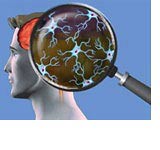When I was on the job market last year, by far the toughest hurdle was convincing interviewing eyes and ears that my hacker and survivor project were connected in some fundamental ways. I think in the end, I was successful at times but it was difficult for some folks to see the connection in part because most professors knew little or zilch about survivor politics so I had to lay that ground work and then toss out the connections, which included free speech, the politics of freedom and self-determination, attacks on corporate/closed science. Now with the Zyprexa scandal and the support coming from Free Culture, these two worlds have indeed moved even closer together than before. (Thanks Jonah for pointing out).
Free Science, Free Culture
Zyprexa Kills Campaign
So this is a little old news but it is still interesting news about freeing the suppressed zyprexa documents. Here is some additional background information .
VIVA ZYPREXA!
I am about 2/3 over with my haul from Edmonton to San Juan, PR (laying over in the beautiful JFK) and am too tired to blog anything much of substance but do check out Furious Season’s impassioned and excellent commentary on the recent NYTimes article (and this one )that reveal how Eli Lily knowingly downplayed the risks of Zyprexa. And if you read the second article, you will find out what Viva Zyprexa means.
Here is Eli Lily’s press release, which I have included on the next page as these things tend to vanish…
Big News in Pharma Science
So one of the darling drugs for bipolar disorder (and I believe schizophrenia) has been Zyprexa.. Marked by the pharmaceutical company as a wonder drug, for being safe and effective, it has just come out that Eli Lilly, maker of the drug, hid and downlplayed the severity of side-effects.
This is big because critics from survivors to academics and journalists and have been attacking pharmaceutical science for this very reason… This explicit revelation is thus pretty gynormous.
I am frantically getting ready to go to PR, so that is I can say but more later…
NYTimes article on kids and psych drug
It is good to see the New York Times critically report on the (ab)use of cocktail psychiatric drugs used for treating children (and see this older New Yorker article The Pediatric Gap on the general lack of saftey testing for drugs given to kids).
What is a shame, however, is that the total lack of critical interrogation that there may be actual environmental causes for some of these problems and this, despite the publication of new studies from leading medical journals (such as Lancet) that finally are addressing the possibility that over 200 chemicals are causing havoc on brains, behavior, and thus life… (kinda a no brainer at some level even if we do need more specific studies…)
As the article on the chemicals reports, critics of they study say they Lancent authors are verging on scare-mongering, because there is no proof of a pandemic.. Well, we do need more proof but does that mean we should not study what is so understudied (and hard to study because how does one measure the effects of the synergistic combination of x number of chemicals over x many years??)
But as the NYTimes piece shows there does seem to be a pandemic in prescribing people and kids psychiatric medications. So possibly there is some connection to be made here??
And what I can’t understand is why it is that those within the medical establishment who are confronting kids with so called behavioral and those that are critics of overprescription are not asking what may be behind some of these problems…
While I agree that a percentage of the kids being put on drugs are totally fine and just being kids, I am sure there are many others who are suffering. And while some of these psych drugs may be an acceptable and necessary short term solution, this NY Times article should make us pause, and seriously pause, about the viability of these drugs as a realistic solution, given the horrible side effects they cause (just read the article). Even if some so think these are necessary, these are crude therapies.
I think we need another “Silent Spring” with an eye toward possible behavioral effects to shake people not out of an apathy, but from a myopia that seems satisifed with engaging only with symptoms and surfaces.
.
Hunting and Gathering on the Internet
This morning I got back to an article that has been on and off my work-plate for a year now, one that I have to turn in to a discussant for my 4S panel as well for an edited collection of articles on the intersection between art, activism, and biopoltics.
Part of my efforts meant attacking a virtual “stack” of articles and one of them was one of best journalistic articles I have read in a long time. Exceedingly clear prose is combined with good references, hard numbers and just the right amount of passionate verve to make reading actually fun and not just another nameless, faceless cog in the academic research wheel. The article mentioned a couple of interesting studies that while sadly not linked from the article (but I am going to take that was an editorial and not authorial decision), they were pretty much cake to find by doing a little poking and prodding on the Internet.
So for example, one of them was published on PLoS Serotonin and Depression: A Disconnect between the Advertisements and the Scientific Literature and stands pretty strongly on its own right. But what is even better are the long list of citations (many with links) that would otherwise be frankly, a *total* time consuming bitch to find like the correspondence between the FDA and pharmaceutical companies:
# Food and Drug Administration Division of Drug Marketing Advertising and Communications (1997) Effexor warning letter. Rockville (Maryland): Food and Drug Administration. Available: http://www.fda.gov/cder/warn/june97/effexor.pdf. Accessed 14 October 2005.
Total gems given to you right there on a silver plate. That is what I love about Internet based research…
On the other hand, this extreme access is not always so peachy. The amount of data now available can be experienced as a totally mind-numbing, frightening, chaotic infolanche (as one of my old adivsors liked to call it), which translates into a lot of academic “hunting and gathering” not to mention all the sorting, sifting, cataloging, and then of course trying to remember what the heck you have just amassed in the first place, even with the aid of tags and all
I am not sure if things have gotten easier or harder because this is all I personally know but what I do know is that there are times when I just love the hunt, losing myself for hours, following links, gathering articles, enlivened, exicted about research and there are others when the woolly mammoth of infomartion gets the better of me.
ABILIFY THIS

Yesterday I was catching up with my magazine reading at Chapters (the Canadian equivalent of Border) when I came across an ad for a drug ad for bipolar disorder that struck me as slightly different–less euphoric, more cautious to be exact—compared with the ads that have been bandied loosely in all sorts of magazines in the last decade in the US.
The ad was for a drug called Abilify which must be some verbal riff on Ability (no?) and there was a very clear pronouncement on that ad that admitted they had no idea how the drug even worked. It went like this:
“ABILIFY may work by adjusting dopmamine activity instead of completely blocking it and by adjusting serotonin activity. However, the exact way any medicine for bipolar disorder works is unknown.”
I find this interesting because its tone seems to depart from other ads that seem somewhat more confident (or if they were less so, it was probably kept in the fine print). But when I went to the webpage, this caveat was a little harder to find, as it was a few clicks away within a page entitlted The Brain, Bipolar I Disorder, and ABILIFY . It provides a “handy” pictoral representation of what may be going on with your brain with bipolar disorder/treatment. I found the series somewhat odd and amusing, especially the one that used a magnifying glass to “see” all the neurons and nerves or whatever they are in your brain.
update: so you know, the US and New Zealand are the only 2 countries that allow drug direct to consumer advertising so I am not sure what the ad was doing in this magazine. It was American magazine but in Canada. I would think they would make them get rid of ads like that. Anyone know why it can slip through the border like that?
First Drug for One Health
There are not many non-profit pharmaceutical organizations. In fact there is only one but now that they have recently announced that India approved a drug, Paromomycin IM Injection, to cure Visceral Leishmaniasis (VL), that they developed, it is more likely there will still be at least one, and perhaps more of these in the future.
Oped: How drug lobbyists influence doctors
The Boston Globe published a scathing op-ed, How drug lobbyists influence doctors.
But I write not about politicians (plenty of people are doing that already), but about similar corruptive influences in medicine. While lobbying groups spend about $2 billion to convince politicians to do their bidding, pharmaceutical companies spend nearly 10 times that much to influence the nation’s 600,000 to 700,000 physicians to prescribe the newest and most expensive drugs. I imagine that many people who regularly watch television assume that the companies are spending most of their advertising budget to influence consumers, but no. Nearly 85-90 percent is spent on doctors, for free drug samples, speaker’s fees, consultation fees, and ”educational” grants.
JAMA reveals Merck Downplayed Risks
Lawyers Evaluate Censure of Merck
# As jurors deliberate in one Vioxx trial, experts say Merck will be hurt in the many other cases.
By Lisa Girion, Times Staff Writer
Jurors continued deliberating Friday in the latest Vioxx trial as some legal experts said Merck & Co.’s defense against thousands of similar lawsuits would be hurt by an accusation that company scientists had downplayed the pain reliever’s heart attack risk.
A rare “expression of concern” posted online Thursday by New England Journal of Medicine editors chastised Merck scientists for failing to report three nonfatal heart attacks among Vioxx users who were at low risk of cardiac problems.
The editors said two scientists employed by Merck knew about the three heart attacks more than four months before the journal published an article by the scientists about a Vioxx study conducted in 2000. The editors said they determined that information about the heart attacks had been deleted two days before the article was submitted.
The editors also said the three heart attacks would have led to different conclusions about the risk of Vioxx, particularly among users who were not predisposed to heart problems.
Merck representatives did not return calls Friday. The company issued a statement Thursday saying the heart attacks had been reported after a cutoff date for data for the study. Merck also said it promptly disclosed the three heart attacks to the Food and Drug Administration, as well as in a news release.
….


